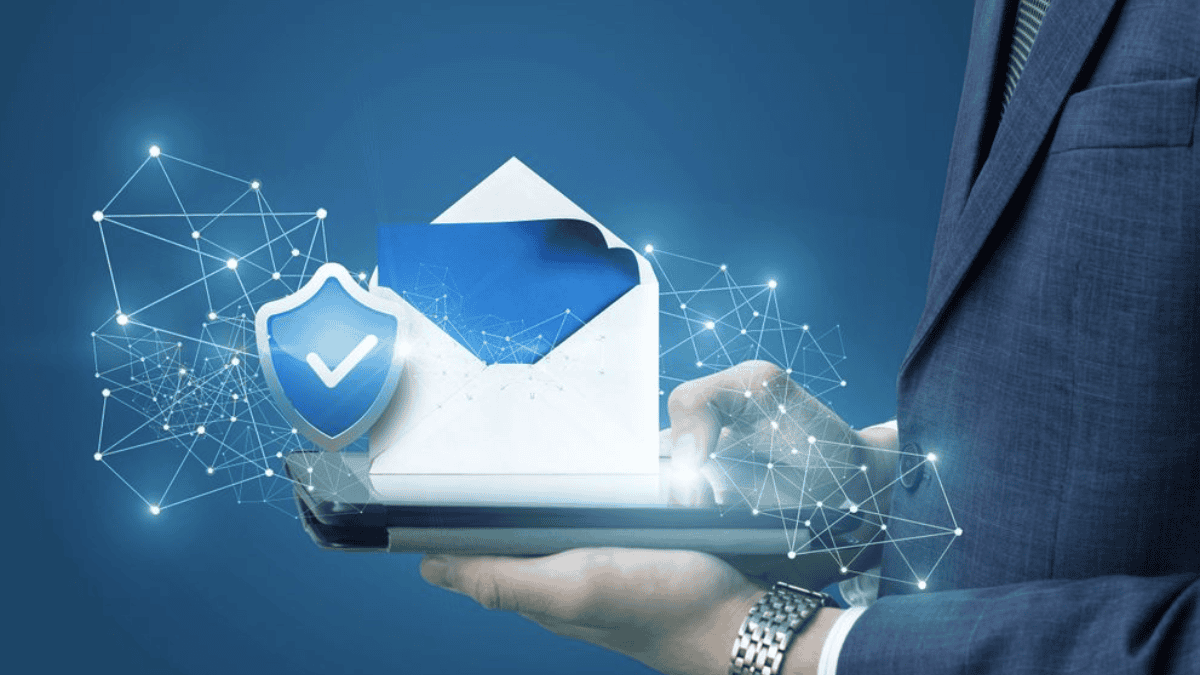In today's digital age, secure communication is essential for small and medium enterprises (SMEs). With the increasing dependence on technology, many business owners often ask, what is IT support and how it helps safeguard their operations. The reliance on technology for daily tasks means that protecting sensitive information is more crucial than ever.
Why Secure Communication Tools Matter
Secure communication tools play a vital role in safeguarding business information. These tools help ensure confidentiality, integrity, and availability of data exchanged within the organization and with clients. By implementing secure methods of communication, businesses can protect their sensitive data from unauthorized access and breaches.
Risks of Insecure Communication
Using insecure communication methods exposes SMEs to various risks that can have significant financial and reputational repercussions. Organizations may suffer from data breaches, loss of intellectual property, and increased vulnerability to cyber-attacks.
Here are some common risks associated with insecure communication:
| Risk | Description |
| Data Breaches | Unauthorized access to sensitive information can lead to significant financial losses. |
| Identity Theft | Cybercriminals may steal personal information for malicious purposes. |
| Reputation Damage | Loss of customer trust can be damaging to a brand and its operations. |
| Legal Consequences | Failure to protect data may result in penalties and fines. |
The need for secure email and communication tools cannot be overstated for SMEs. Investing in adequate security measures helps protect critical business information from various threats, ensuring the continuity and stability of operations.
What is Email Encryption?
Email encryption is a method used to secure the content of email messages by transforming them into a coded format that can only be read by authorized recipients. This process ensures that even if an email is intercepted during transmission, the information contained within remains protected and inaccessible to unauthorized parties.
There are two primary types of email encryption:
- End-to-End Encryption: This type encrypts the message on the sender's device and only allows the intended recipient to decrypt it.
- Transport Layer Security (TLS): This method secures the email during transit but does not encrypt the email contents on the server, making it less secure than end-to-end encryption.
5 Benefits of Email Encryption
Implementing email encryption provides several advantages that are essential for protecting sensitive information, particularly for small and medium-sized enterprises (SMEs). Below are some key benefits:
| Benefit | Description |
| Enhanced Security | Protects sensitive information from unauthorized access. |
| Compliance | Helps meet legal and regulatory requirements for data protection. |
| Data Integrity | Ensures that messages are unaltered during transmission. |
| Improved Trust | Builds confidence with clients and partners through secure communication. |
| Reduced Risk of Cyber Attacks | Deters hackers and cybercriminals from targeting encrypted messages. |
Utilizing email encryption, SMEs can significantly enhance their communication security and mitigate the risks associated with data breaches and unauthorized access. This tool becomes a vital component in the suite of secure email and communication tools for businesses. Similarly, adopting robust digital platforms that support secure collaboration and information sharing is just as essential—explore more in our article "What Makes SharePoint Networking Ideal for Growing SMEs."
Secure Messaging Apps
As small and medium-sized enterprises (SMEs) increasingly rely on digital communication, secure messaging apps have emerged as essential tools for enhancing communication security. Understanding their features and advantages can help SMEs make informed decisions about their communication needs.

Features of Secure Messaging Apps
Secure messaging applications come equipped with various features designed to protect sensitive information during communication. Here are notable features that SMEs should consider:
| Feature | Description |
| End-to-End Encryption | The content of the message is accessible exclusively to the sender and the intended recipient. |
| Self-Destructing Messages | Messages are automatically removed after a designated time, helping minimize the chance of data leaks. |
| User Authentication | Requires users to verify their identity before accessing the app, enhancing security. |
| Secure File Sharing | Allows safe transmission of documents and files without compromising data. |
| Multi-Device Support | Enables access from different devices, maintaining security across platforms. |
| Group Chat Security | Protects group conversations with similar encryption measures, ensuring all participants are secure. |
Advantages of Using Secure Messaging Apps
Utilizing secure messaging applications brings several benefits to SMEs aimed at enhancing overall communication safety and efficiency. The following table outlines some of the key advantages:
| Advantage | Description |
| Enhanced Data Protection | Reduces the risk of data breaches and unauthorized access. |
| Increased Privacy | Keeps sensitive conversations confidential from third parties. |
| Improved Communication Speed | Offers real-time messaging capabilities, facilitating quicker decision-making. |
| Cost-Effective | Many secure messaging apps are affordable or free, making them budget-friendly for SMEs. |
| Compliance with Regulations | Helps businesses adhere to data protection laws and industry regulations. |
Implementing secure messaging applications, SMEs can significantly bolster their communication practices, ensuring both the protection of sensitive information and adherence to best practices in security.
Virtual Private Networks (VPNs)
A Virtual Private Network (VPN) is a technology that establishes a protected link between a user's device and a remote server through the internet. This connection encrypts the data transmitted between the device and the server, making it difficult for unauthorized parties to intercept and access the information. VPNs are commonly used by businesses to protect sensitive data and ensure secure communication among employees.
The main functions of a VPN include:
- Encryption: Protects data in transit.
- Anonymity: Hides the user's IP address.
- Remote Access: Allows employees to securely connect to the company network from various locations.
How VPNs Enhance Communication Security
VPNs enhance communication security by ensuring that all data sent and received is encrypted and transmitted over a private tunnel. This technology guards against potential threats and vulnerabilities that arise when employees communicate over public networks.
- Data Protection: The encryption process ensures that any sensitive information, such as emails or files sent, cannot be read by anyone intercepting the traffic.
- Secure Remote Work: Employees working from home or on the go can connect to the company network securely through a VPN. This enables them to access necessary resources without risking exposure to cyber attacks.
- Access Control: VPNs can restrict access to the company's internal resources, allowing only authorized users to connect. This ensures that sensitive data remains protected even when accessed remotely.
- Bypassing Geo-restrictions: VPNs allow users to bypass geographical restrictions, enabling secure communication and access to resources that may be restricted in certain locations.
Incorporating VPN technology, SMEs can significantly enhance their communication security, thereby ensuring that internal communications remain confidential and protected from malicious activities.
What is Two-Factor Authentication?
Two-Factor Authentication or 2FA is a security process that requires two distinct forms of identification to access an account or system. This method enhances security by adding an extra layer beyond the standard username and password.
The first factor is typically something the user knows, such as a password. The second factor can be something the user has, such as a smartphone, or something the user is, such as a fingerprint. By requiring two types of verification, the likelihood of unauthorized access is significantly reduced.
Implementing Two-Factor Authentication in Communication
Implementing Two-Factor Authentication in communication platforms is crucial for enhancing the security of sensitive information. SMEs can adopt several steps to configure 2FA effectively.
- Choose the Right Tools: Select communication tools that support 2FA options. This could include email accounts, messaging applications, and collaborative platforms.
- User Training: Train employees on how to set up and use 2FA. Providing clear instructions can help reduce resistance and increase adoption rates.
- Regular Monitoring: Maintain a monitoring system to track the use of 2FA. Regular assessments can highlight any security weaknesses and areas for improvement.
- Backup Codes: Offer backup codes for users who may lose access to their second factor, such as a user switching phones. This ensures they can still access their accounts without compromising security.
- Policy Integration: Incorporate 2FA into the organization's overall security policies. This reinforces the importance of multi-factor verification across all communication methods.
Following these steps, SMEs can effectively implement Two-Factor Authentication in their communication tools, significantly reducing the risk of unauthorized access and ensuring the integrity of sensitive information.
Importance of Employee Training
Training employees on secure email and communication tools is vital for enhancing overall security within an organization. Employees often represent a company's first line of defense against cyber threats, making their education essential. By understanding the risks associated with insecure communications and the importance of using secure tools, employees can contribute to safeguarding sensitive information.
Training programs should focus on the following key areas:
| Training Area | Description |
| Recognizing Phishing Attacks | Educating employees on identifying suspicious emails or messages |
| Best Practices for Password Management | Providing guidelines on creating strong passwords and changing them regularly |
| Proper Use of Communication Tools | Teaching the correct use of secure tools like VPNs, encrypted emails, and messaging apps |
| Incident Reporting | Instructing employees on how to report security incidents promptly |
Regular training refreshers should be implemented, ensuring that employees stay informed about the latest security risks and the tools available to protect their communications.

Establishing Communication Security Policies
Creating clear communication security policies is essential for SMEs. These policies provide a framework for using secure email and communication tools, outlining acceptable practices and ensuring compliance among employees.
Key components of effective communication security policies may include:
| Policy Component | Description |
| Usage Guidelines | Outlining acceptable use of communication tools |
| Encryption Requirements | Specifying when and how to use encryption for emails and messages |
| Remote Work Policies | Defining communication practices for employees working from remote locations |
| Access Control Protocols | Implementing restrictions on accessing sensitive communication based on employee roles |
Turning Ambition into Architecture — LK Tech
Clearly defining the procedures and expectations related to communication security helps SMEs build a culture of awareness and makes employees more accountable for safeguarding business communications. At LK Tech, we deliver top-notch IT support tailored to your unique needs, including secure communication tools that keep your data safe and your operations running smoothly. Businesses that want to stay ahead should explore reliable IT companies in Cincinnati for innovative and trusted tech solutions. Let us help you strengthen your security—reach out to us today and discover how we can protect your business communications.


